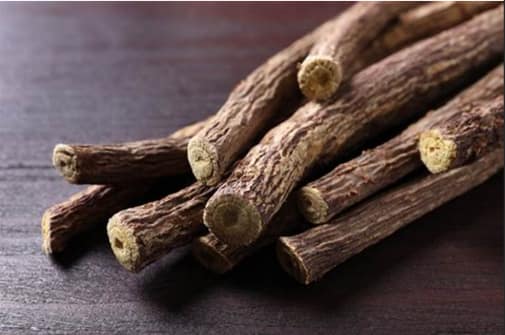Skip to content


🌍 Origin and Distribution
- Scientific Name: Glycyrrhiza glabra
- Family: Fabaceae (legume family)
- Common Names: Licorice, Liquorice
- Hindi Name: Mulethi (मुलेठी)
- Native to: Southern Europe and parts of Asia, including India, Iran, and China
🌳 Botanical Description
- Type: Perennial herb
- Height: 1 to 1.5 meters tall
- Leaves: Pinnate with 9–17 small leaflets
- Flowers: Purple to pale blue
- Roots: Thick, fibrous roots used for medicinal and flavoring purposes
🧪 Chemical Components
- Glycyrrhizin: A natural sweetener that is 30–50 times sweeter than sugar
- Anethole: Provides a sweet, aromatic smell
- Glabridin & Glabrene: Phytoestrogens (plant-based compounds that act like weak estrogen)
- Saponins & Flavonoids: Anti-inflammatory and antioxidant properties
🩺 Health Benefits and Uses
- Sore Throat & Cough: Soothes irritation and reduces inflammation
- Stomach Ulcers: Protects the stomach lining and helps heal ulcers
- Respiratory Relief: Acts as an expectorant and helps with asthma and bronchitis
- Hormonal Support: The phytoestrogens may help balance hormones, especially in women
- Skin Disorders: Used in creams for eczema and skin inflammation
- Immune Boosting: May support immunity through its antioxidant activity
🍬 Other Uses
- Widely used as a flavoring in:
- Candies
- Herbal teas
- Toothpaste
- Cough syrups and lozenges
⚠️ Safety and Precautions
- High doses or long-term use of glycyrrhizin can cause side effects like:
- High blood pressure
- Low potassium levels
- Water retention
- Deglycyrrhizinated licorice (DGL) is a safer form often used for stomach issues




